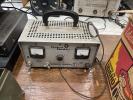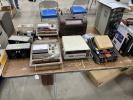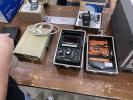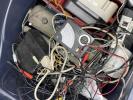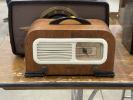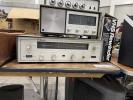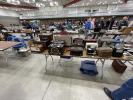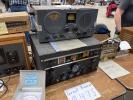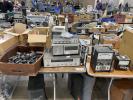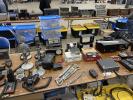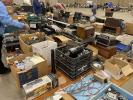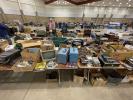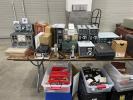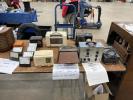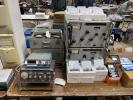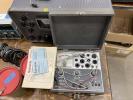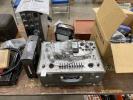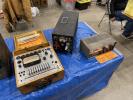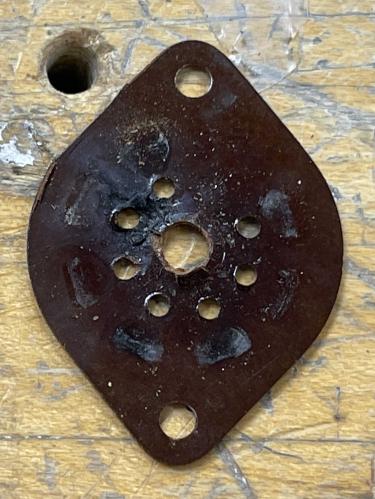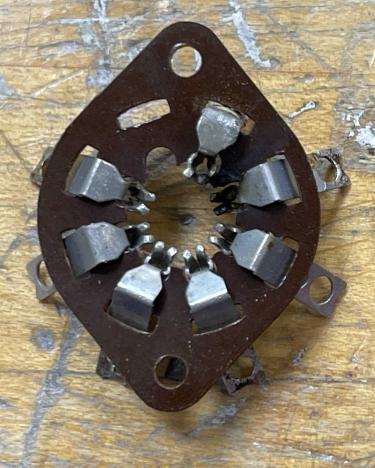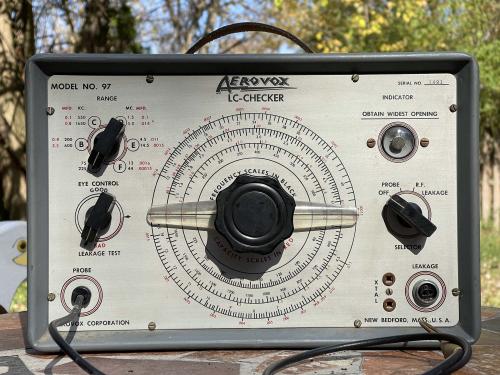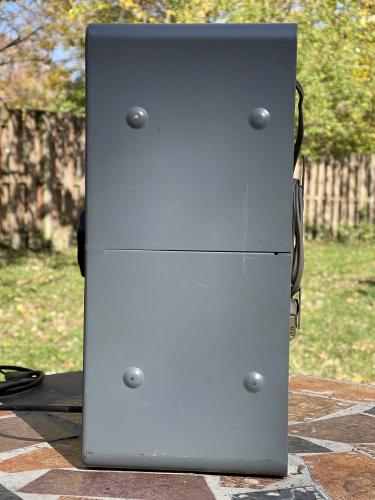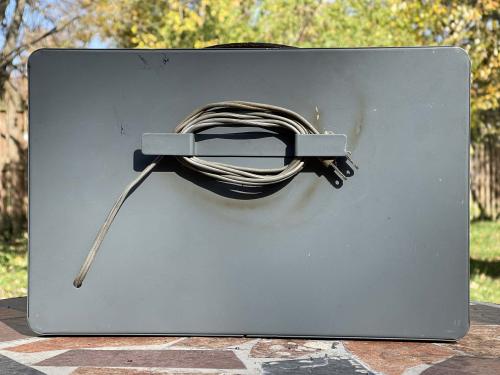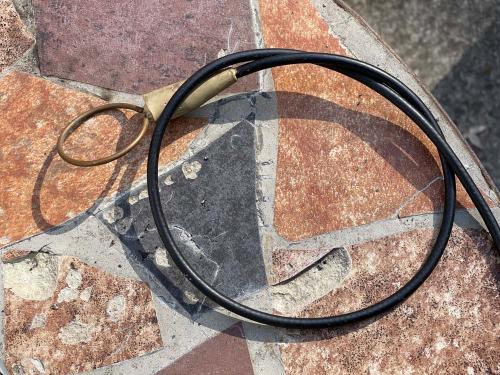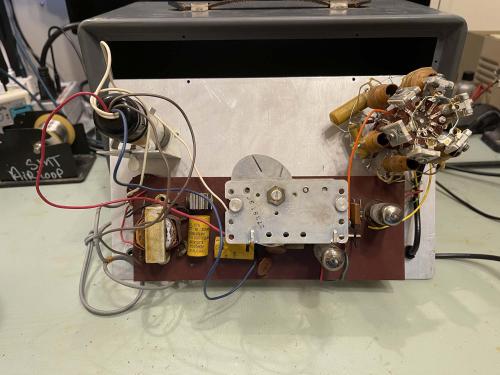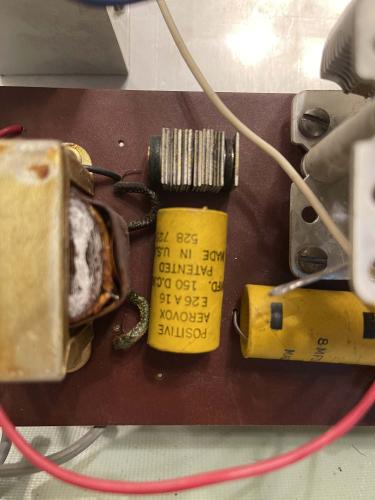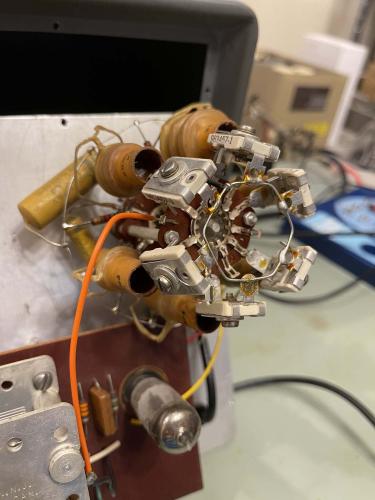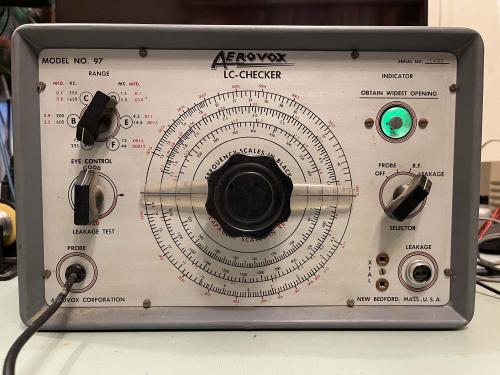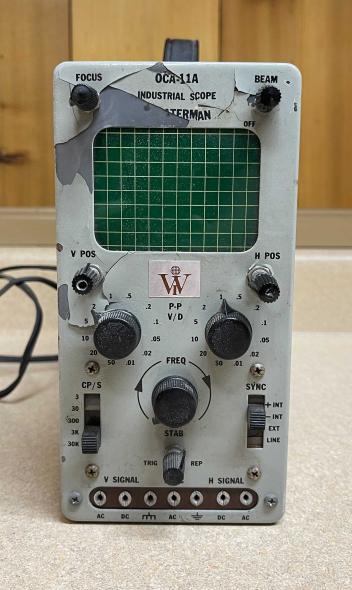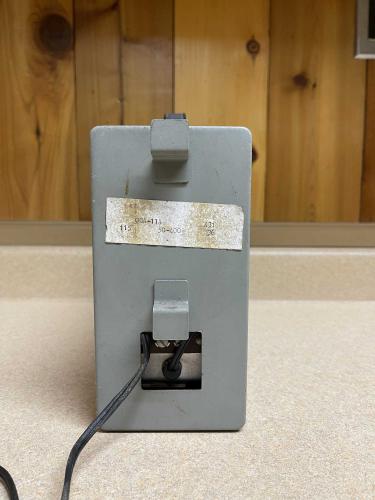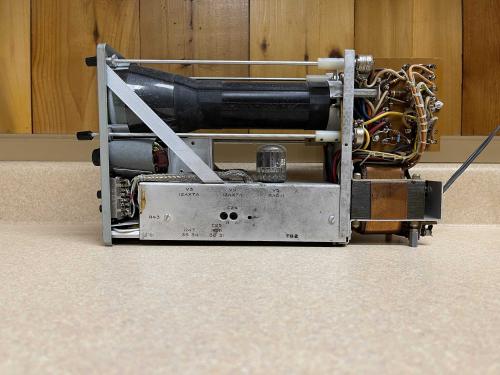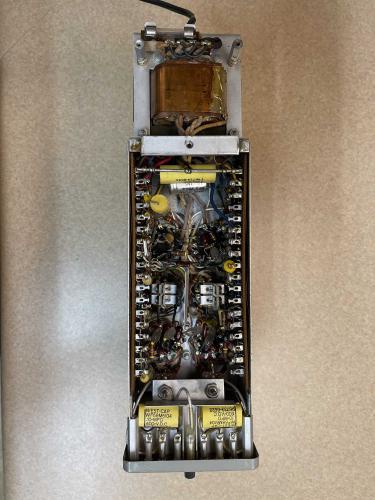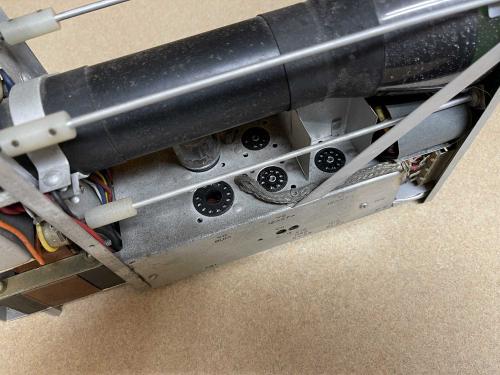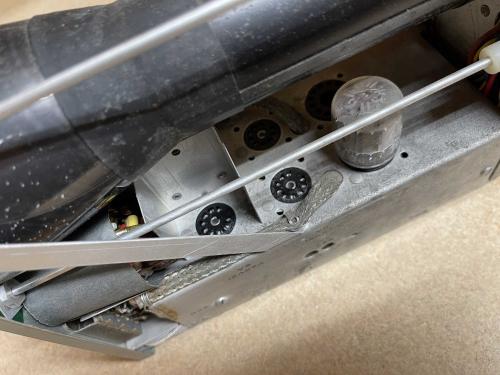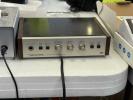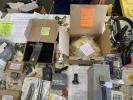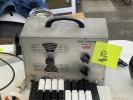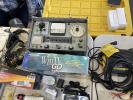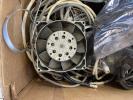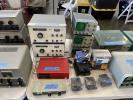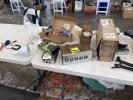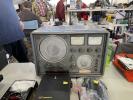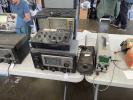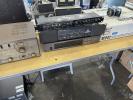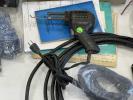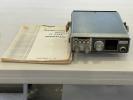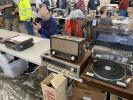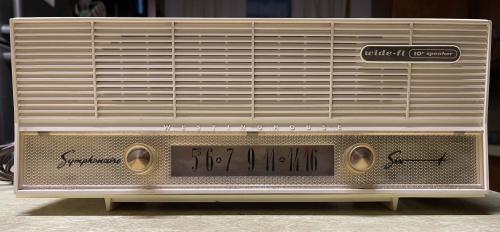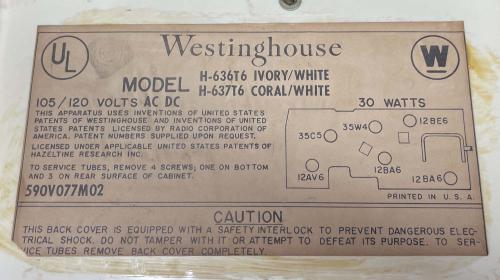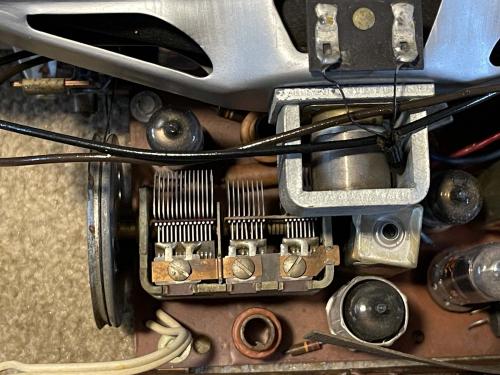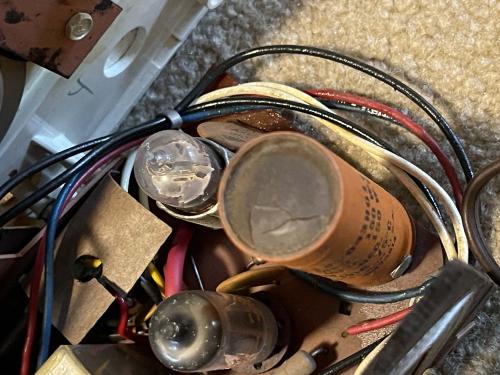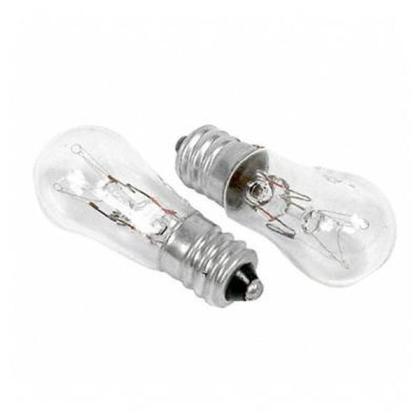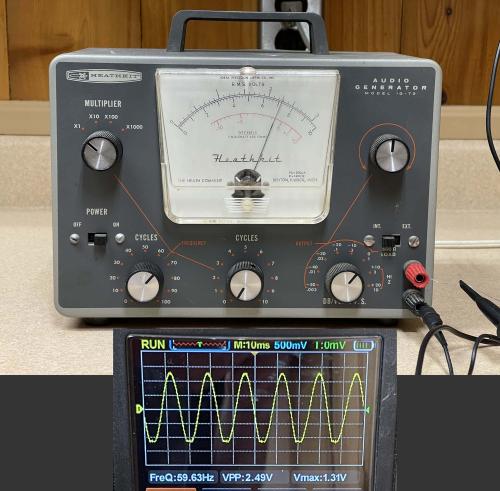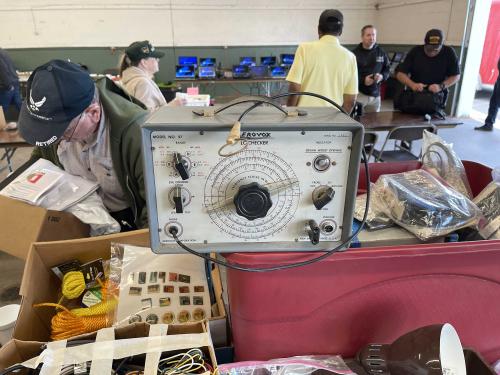- 2024
- Nov
- 22
Pictures from the 2024 Fort Wayne Hamfest
The show this year was smaller than usual, occupying maybe 3/5 to 3/4 of the normal space, with a large section left empty. Prices at this show ranged from ok to stupid, which is kind of unusual as this show usually features pretty good values. There were a couple that simply were smoking crack and asking prices that would have been appropriate years ago when the equipment was newer.
I primarily went to get a bunch of tubes from Bob at hamtubes.com - he always has really good prices on tubes both rare and common, so that’s where I spent the bulk of my purchase money. A few other things came home with me, including a couple that will get featured here as soon as I can get to them.
There were still good things to see, and here they are:
.
That’s it as far as hamfests for 2024 - the next two shows will be the Scott Antique Market events this coming (after Thanksgiving) weekend, and right before Christmas. I may combine those two into one post, depending on what I see.
See you there!
- 2024
- Nov
- 16
Pictures from the Ft. Wayne hamfest on the way!
The Fort Wayne hamfest happened today. The show was kind of mildy disappointing, with somewhat less vendors showing up this year - and some that were simply smoking crack when it came to prices. One in particular made eBay prices look low, and reminded me of the vendor that had those big stainless steel racks of test equipment at Hamvention with astronomical prices on them, rain or shine. I wish them luck in selling, but you’re going to be hard pressed to unload some of that stuff - especially when you can get new equivalents (from the same manufacturer!) for less.
Regardless, there was still some good stuff to see and take home. Stay tuned, pictures are on the way!
- 2024
- Nov
- 6
I found the 60Ω resistor in my Heathkit IG-72 socket.
Back in part 5 of my Heathkit IG-72 series, I was getting ready to button things up when the socket for the rectifier tube started arcing. I assumed there as carbon tracking inside the socket and moved on with replacing it.
That assumption was correct. Here’s the top wafer:
You can clearly see the arc has eaten away the portion between pins 6 and 7, while depositing a lot of carbon and other debris on the phenolic wafer. The bottom wafer is similar:
It’s not the easiest thing to see, but there’s a lot of soot on the same two pins, and part of the socket crumbled away as the rivet was being drilled out. I’m surprised this thing didn’t arc as soon as it was turned on - but perhaps this is why the device was retired. Who knows, really.
Regardless, there’s a new socket in it’s place that shouldn’t have this issue, and this one goes in the bin - although I may save a few of the better pins for some later purpose.
- 2024
- Nov
- 2
The Aerovox Model 97 LC-Checker
This interesting piece came from the 2024 Cleveland Hamfest for $5. The vendor was selling an estate - that seems to be happening a lot lately - and was just looking to return some cash to the estate itself. He knew nothing about the unit, but I took a chance and picked it up.
Aerovox, of course, is a name you’ll probably see on capacitors in older devices. The name Aerovox is still out there, but it seems to be more of an industrial player instead of a consumer devices company.
The device seems to be fairly standard at first glance, with your normal ranges and dial to tune to the unit under test.
Nothing special about the case.
The back does have a nice cord wrap area, and the cord seems to be still soft.
The probe is the most unusual part of this device, and is a deal-breaker for using the thing.
Its an inductive probe - there was another piece that went inside this loop of copper, so you could make a part connection without actually connecting the electronics of the tester to the part itself. This is kind of cool because it avoids hitting a live or charged device, but it’s also missing the business end of the probe, so the device can’t read anything. I’m sure it could be modified to work, but I have enough checkers already…
The inside is pretty sparse. A big selenium stack, some capacitors, and the oscillator section for actually checking parts. The big banana slicer in the middle dominates everything.
The device does come alive, and switching things makes the eye open and close.
But…that’s about it. Without the probe, it’s nothing more than a shelf queen - or parts. Fortunately, I have someone who would like a display piece, so it goes to them instead of the parts bin.
- 2024
- Oct
- 30
A Waterman OCA-11A “industrial / pocket” oscilloscope.
This little scope came from the recent MARC hamfest, and was sold as not working - the previous owner stated that someone had removed tubes, and all he did was verify the heater in the CRT was lighting up. He was right, someone removed all of the 12AX7 tubes as well as a 6U10 compactron, leaving only a 6AG11 compactron in place. All of these devices are triode amplifiers, with the 6AG11 having two diodes in addition to the triodes.
The device appears to have a solid-state power supply with solitary diode. There’s some small evidence of repairs being made over the years, but for the most part it seems to be fairly original.
Tube compliment for this device is:
4x 12AX7 dual triode
1X 6U10 triple triode
1X 6AG11 dual diode/dual triode
The device is capable of operating on 50-400Hz @ 115VAC
The front offers all the controls, and uses pin jacks for input on a strip at the bottom. That’s kind of unusual. The metal under the paint appears to be oxidized, and the enamel with the lettering is flaking off. The potentiometers are brought out to the front by long internal shafts, some of which are bent. This could be an easy fix, as they’re just connected internally with nylon unions.
The back offers a cord wrap and some screw terminals, presumably for grounds. It also offers a badly exiting cord from the previous owner.
The device is relatively clean inside with the transformer, power supply, and high voltage all riding in the back.
The bottom is well packed, but there’s no wax paper stuff as far as I can see. Looks like films and other decent capacitors, but I bet some of those carbon comp resistors are drifting. There’s an electrolytic that’s probably baked out, and some neon bulbs of unknown type probably being used as regulators that would need to be replaced, but that’s about it.
You can see where the previous owner removed all of the “good” tubes. The 6AG11 is also a triode pair, so I’m not sure why they didn’t remove it as well. Fortunately, if you’re not concerned about the make of the tubes, all of them can be relatively cheap - there’s about $25 worth needed for this device.
It’s an interesting little scope, and would be perfect for a benchtop radio repair station - tube scope with tube inputs doesn’t care if you hit B+ for a second.
I think I may give it a shot and see if it will live again. If someone out there has a schematic for this unit, I’d appreciate a copy.
Next part of this series: https://wereboar.com … oscope-part-2-tubes/
- 2024
- Oct
- 29
Pictures from the MARC 2024 Hamfest
This is a show that I’d never been to, but it was a double treat. The show itself had a decent array of vendors and stuff, and the show was being held at the Military Air Preservation Society hanger, so we were able to tour the grounds as part of our show admission.
I highly suggest you check out the air museum portion, there’s a lot to see. Pictures of that coming soon.
We browsed the aisles for a couple hours, wandering through a few times. I brought home a few books and a small scope, my friend brought home some older high-end audio gear. There were a few other things that caught my eye, but I’ve got enough anchors working right now that I’m good - and the few remaining ones I’d like didn’t show up here.
Regardless, we had a good time and will probably come back next year, time and circumstances permitting.
.
Next (and last hamfest of the year) show is Fort Wayne on the 16th of November. See you there!
- 2024
- Oct
- 12
An interesting Westinghouse Radio
I was at an antique store today and walked past a display with multiple radios. One caught my eye - obviously an AA5 in pretty good shape. The color is rather boring, but that’s not really an issue for me. There were a few others, a clock radio and some transistors. One was marked working, the others were all marked “Does not warm up.”
Of course the transistor radios don’t warm up, not having any tubes….
I purchased the one, it was also marked “Does not warm up.” Ok…that’s rather odd for a direct string radio, but whatever.
It’s kind of neat - the entire front is a speaker. The label, however, revealed something interesting about the unit.
There are 6 tubes in this thing? That can only mean it’s got a tuned RF front end. This thing should be a good performer if it works. But it “Does not warm up?”
Opening it up, it’s most certainly a tuned RF front end. Three gangs on the tuner.
I noticed that the tuning dial is kind of wonky, it binds at the front and slips elsewhere. Not a big deal, that’s almost expected.
I also noticed that the power switch was push-pull. I can almost guarantee the person selling it turned the knob and didn’t get a click, so they automatically assumed it was dead.
I gave it a good look over. There’s a lot of different brands of tubes in there. This thing has seen a lot of hours. But I immediately noticed something else, something that is probably the issue.
The filter is kind of funny with cracks in the top. So…put it back together, plug it in, pull the knob out…the ZZZZZZZZZ of bad filters greets me.
So, problem solved. There’s no AM stations where I am, so I didn’t get anything under the hum. The filter is easy enough to get out, and I think I have some extras at home. This will be a quick weekend project to at least get it cleaned up so I can diagnose any other issues.
Once we get the filters changed, stay tuned!
Next part of this series: https://wereboar.com … -h-636t6-aa51-radio/
- 2024
- Oct
- 6
That weird lightbulb in Heathkit - and other - test equipment.
If you’ve ever opened an audio generator from the tube era, chances are you’ve seen one of these in the circuit.
That’s a GE type 11098 - 3S6/5 - a 3W, 115V lamp. It’s used as a balance element for the oscillator in those devices. It acts like a PTC resistor.
The generator I picked up recently at the Piketon Hamfest has a slightly unbalanced output, with the bottom of the signal being flattened. While I assume there are probably some capacitors in there that are bad, it was suggested that I try this lamp. (Maybe…I did find a post where one of these simply needed new tubes and a tune-up.)
They seem to be widely available, as they’re some sort of emergency lighting bulb. I’m planning on ordering some and will give it a try - stay tuned for results!
- 2024
- Oct
- 5
Some notes from The Scioto Valley Amateur Radio Club Hamfest
I grabbed a friend and headed down to this show earlier today. It was a pretty small event, but that’s the kind of thing I like to go to - you never know what you’re going to find. We even stopped at (the last?) Rax on the way home.
I didn’t pick up much - some books, some parts, and this Heathkit Audio generator with a parts donor unit.
I’m asking it for 60Hz, and getting 59.7. That’s pretty good for a piece of 50 year old equipment. It’s a simple capacitive oscillator, so there’s not much to go wrong - exactly what you need for your bench. It’s certainly in need of service, but what do you expect?
Pictures from the event are on the way, so stay tuned!
- 2024
- Oct
- 4
The Aerovox Model 97 Inductor-Capacitor Checker
One of the things I picked up at the Cleveland Hamfest was the Aerovox Model 97 from this picture:
It was cheap, it was from a Silent Key estate that a friend was cleaning up, and it had a functioning eye tube - the primary reason I picked this one up. Those aren’t exactly the easiest thing to come by these days, so having a few laying around is probably a good idea.
This is kind of an oddball unit as far as checkers go - most simply use a pair of leads you put across an unknown part. This one is a bit different in that it has an inductively coupled loop that acts as the probe for the device. You place a coil with probe ends across your part and that couples back to the checker - no direct connections are made, so you save the device if the part is charged.
Unfortunately, the probe coil was not present with the device - it may have been buried somewhere in the box it was stored in, but who knows…I don’t have it, and seeing as how this is a very low capacity device, it doesn’t bother me. Any one of the Eico or Heath devices is a bit more useful in this regard.
It did include a manual, which I will enter into the wereboar archives. You can download a copy here (this link is hosted on my webhost provider’s service):
https://privateemail … 651f/1/8/NDY/NDYvMjE
I’ll be doing an internal photo shoot of this device before it goes into parts storage, so stay tuned!





